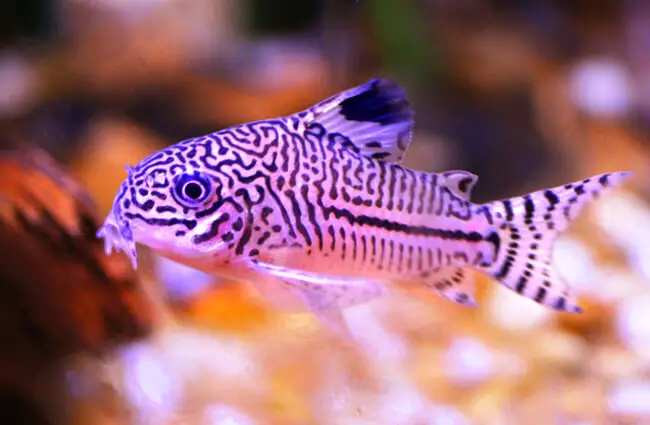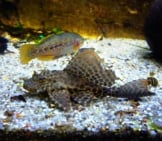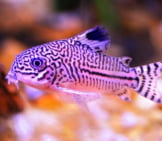The Catfish is a well-known creature easily recognized by its whisker-like fleshy barbels. Researchers place these fish in the taxonomic order Siluriformes. Scientists recognize over 30 different families within the group, with thousands of different species and more still being discovered. Read on to learn about the Catfish.
Description of the Catfish
Though these fish vary dramatically in size, color, and shape, you will likely recognize one when you see it. They have several long, fleshy growths near their mouths, which look like cat whiskers, which researchers call “barbels.”
You can find these fish in an incredibly wide range of sizes. Some measure just a few inches in length, while others surpass eight feet long or more.
Interesting Facts About the Catfish
The incredible variety of species means that these fish have an immense range of traits and behaviors. Learn what makes a few specific species unique, below.
- Mekong Giant Catfish – Incredibly large and incredibly rare, this species teeters on the brink of extinction. The IUCN lists this species as Critically Endangered due to overfishing and habitat destruction. Some consider this species the largest strictly-freshwater fish species, and the largest recorded individual measured 8 feet, 10 inches long.
- Candiru – If you are eating anything, finish before you continue reading, as you might lose your appetite after this. This little species, also known as the vampire fish, has a rather distasteful reputation. Reportedly, people have recorded several instances of this parasitic fish swimming up the urethra of swimmers.
- Mudcat – Imagine you are swimming in a murky river, and you plunge your hand into a hole beneath a log, only to have something snatch your hand in its mouth! Though this sounds like a nightmare, it is actually known as “noodling,” and used to hand-catch this species of Catfish!
- Giraffe Catfish – This might be the most charismatic-looking creature you ever place in your fish tank! However, this species is rather uncommon, and grows to about two or three feet long, so make sure you’re prepared to care for it.
Habitat of the Catfish
You can find these fish in an incredible range of habitats. They live in an immense number of different habitat types, some of which seem nearly inhospitable.
Some of the many ecosystems that they inhabit include rivers, lakes, ponds, streams, swamps, and more. While most occupy many different types of habitats, some do specialize in specific types of ecosystems or regions.
Distribution of the Catfish
If you think their size is variable, wait until you see their range! You can find these fish in freshwater habitats and coastal regions of every continent except Antarctica.
They live in Eurasia, Africa, the Americas, Australia, and many surrounding islands. Some live across incredibly vast ranges, while some live only in an isolated region or even a single river system.
Diet of the Catfish
You might start to sense a trend here, but with the incredible variety of species, you cannot lump all of these fish into a single dietary category. Some have primarily carnivorous habits, and eat other animals. Others eat both plants and animals, making them omnivores.
Hunting strategy changes based on the species as well. Many feed via ambush, lying in wait for prey to stray too close. Others actively hunt for prey. They use their sensitive barbels to feel for yummy fish, crabs, insects, frogs, and other prey.
Catfish and Human Interaction
Across the globe, people interact with these fish in many different ways. People use hundreds of different species as food sources, many of which they breed and raise in fish farms. People also keep some species in home aquariums as well.
Overfishing and other human activity impacts these fish to various degrees. Some, like the Mekong Giant species discussed previously, face dire threat from human activity. Other species have such prosperous numbers that human activity does not impact them severely. Each species differs individually.
Domestication
Humans have not domesticated these fish in any way.
Does the Catfish Make a Good Pet
Some species do make good pets. People frequently keep the Talking, Pleco, Banjo, and Cory Catfish as pets. However, you should make sure you only purchase captive-bred fish. Wild-caught individuals can spread disease to your other fish and deplete native populations.
Catfish Care
Specific needs vary from species to species. Some grow larger than others, and need bigger aquariums. Others only reach a few inches in length, and make suitable additions to smaller tanks. While all enjoy frozen or live food, most do well on appropriate commercially prepared fish foods.
Behavior of the Catfish
As is the case across in most other sections, behavior, both social and individual, changes based on the species at hand. Some have nocturnal behavior and spend their nights hunting for prey. Other species feed during both the daytime and the nighttime, or during the day only.
Socially, some species live in groups, while others live alone. Some species also claim and defend their own territories or burrows.
Reproduction of the Catfish
We might sound like a broken record on this, but reproductive behavior also changes based on the species discussed. Each has its own unique mating rituals, egg production, incubation period, and more.
As a whole, the group generally reproduces via spawning. When spawning, the female releases her eggs and the male fertilizes them outside of the body.













![Red Angus Closeup of a beautiful Red Angus cowPhoto by: U.S. Department of Agriculture [pubic domain]https://creativecommons.org/licenses/by/2.0/](https://animals.net/wp-content/uploads/2020/03/Red-Angus-4-238x178.jpg)












![Red Angus Closeup of a beautiful Red Angus cowPhoto by: U.S. Department of Agriculture [pubic domain]https://creativecommons.org/licenses/by/2.0/](https://animals.net/wp-content/uploads/2020/03/Red-Angus-4-100x75.jpg)

